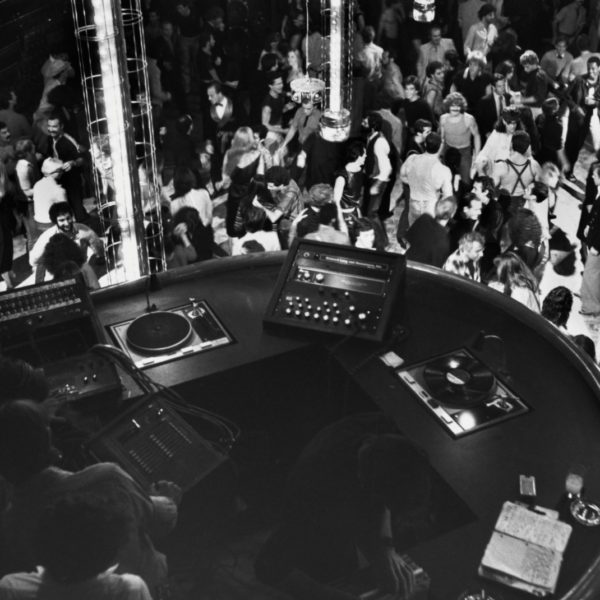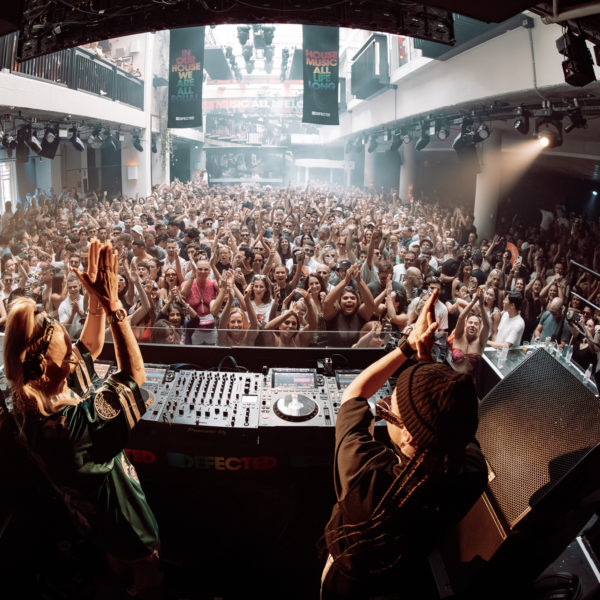By “other webs,” Dryhurst is talking about three eras of the internet. There’s the beginning, or web 1.0—Tim Berners-Lee, Geocities, and so on. Then there’s the present, or web 2.0, dominated by Facebook and Spotify. Web 3.0 is the decentralised future, the roadmap for artists to bypass big-tech platforms.
For crypto optimists, moving to blockchain is the long-term goal—a way to interact with fans and communities directly without the mediation of what’s been called “the GAFA stack.” And there are other NFT applications, such as DAOs, that have nothing to do with outrage-generating gif auctions. DAOs, or decentralised autonomous organisations, are what Dryhurst calls “digital co-ops” that could represent the structures around which organisations such as labels, unions or magazines operate more equitably.
“I lament the fact that profit splitting—the ability for groups of people to all publish an artwork together, and you see that the proceeds being split between them—that kind of emphasis wasn’t prioritised from the beginning,” Dryhurst said. “But it’s coming… There are already experiments with tokenized Discords. So, for example, you buy a token. When you stake that token, you keep it in your wallet. As long as you keep it in your wallet, you have access to this Discord. And these are Discords with hundreds of channels; they’re commissioning their own articles from writers that are members of Discord. They’re commissioning new artworks. You’re seeing the very, very early embers of building a label-cum-publication out of the Discord infrastructure, which to me is really interesting.”
Whatever its promise for better economies and governance, NFTs can still pose a “yuck” factor. As Arielle Gordon reports in a piece for Stereogum, a recent auction of work by the electronic music artists Yaeji and Mura Masa was won by a venture capitalist; another successful bidder bought work for 0.6 WETH (around $1,000) then within minutes relisted it for 15 WETH (a little over $26,600). “Once the dust had settled on the bidding wars,” wrote Gordon, “the artworks’ new owner appeared closer to a ticket scalper or algorithmic sneaker bot than a collector or curator.”
Beyond NFTs’ market-replicating excess, what’s no less distressing to crypto sceptics is its energy consumption. In a Medium post, the digital artist Memo Akten wrote that a single NFT was equal to the energy consumption of a month’s worth of electricity in an EU household, and the emissions of a two-hour flight. The reason? “Proof of work,” the energy-intensive process by which Ethereum verifies itself against fraud or error. To create or “mine” Ethereum, a miner earns fees by solving complex mathematical proofs in competition with other miners; as more coins are minted, the proofs get harder, which computers expend yet more energy solving.
It’s a winner-takes-all process—all miners consume the same energy figuring out the equation but only one is rewarded. The wastefulness of the method is reflected in the estimates for cryptocurrency’s energy consumption. The Cambridge Bitcoin Electricity Consumption Index recently reported that Bitcoin outstripped Argentina’s electricity demand; Ethereum reportedly consumes about the same as Libya. In a widely shared blog post, the digital artist Everest Pipkin concluded that “The only viable option [with crypto] is total moral rejection.” Taken together, this does sound alarming. Crypto’s inefficiency is acknowledged even by the currencies themselves; Ethereum says it plans to transfer from proof of work to proof of stake, a more energy-efficient system that randomly selects a single miner to crack the code.
But it’s difficult to take the claims of non-experts about carbon footprints at face value. Akten, for example, went on to acknowledge his analysis was “one-sided” (he took down his website, CryptoArt.wtf, after revelations that its estimates were being used to harass and abuse artists). The environmental impact of cryptocurrencies, while sizable, is far from clear-cut. As energy experts like Jonathan Koomey have pointed out, mainstream reports of the aggressive electricity consumption of Bitcoin, another proof-of-work cryptocurrency, were often based on modelling stacked with faulty assumptions. There is also a lack of accurate data for the output of the world’s Bitcoin and Ethereum mining centres—most of which are located in China—which emit the bulk of crypto-related emissions.
Further complicating the issue, many Bitcoin mines in China, where two-thirds of the world’s mines operate, draw from energy surplus that would otherwise go unused. But in regions like Inner Mongolia, where many Bitcoin mines are concentrated, the power grid runs on coal. The problem, for now, is with wasteful infrastructure. But a reasonable worry is how miners will respond when the government curbs their operations, by, for example, moving to places where surplus isn’t so readily available.
What’s clear is that better data is necessary to build an accurate picture of crypto’s ecological impact. In a recent tweet, Telefon Tel Aviv, AKA Joshua Eustis, expressed a position typical of crypto optimists well-versed in these sorts of arguments. “We can enact change for the better *now* if we act quickly,” he wrote. “Abandoning new technology will result in large capitalist forces being in policy control forever. Toothpaste out of the tube, do you want to brush your teeth or waste it?” NFTs will be messy and conflicting, the thinking goes, but if artists don’t set the terms now out of moral vanity, they’ll regret it later.
“This technology is not going to overthrow capitalism, to my everlasting dismay,” Eustis told me, “but it’s a step in the right direction. We are in a unique position to shape policy—specifically with ecology, accessibility, education and outreach. Ensuring that anyone who wants skin in the game can get skin in the game. I feel like we have a moral obligation to set those standards now.
“These large companies are gonna have a hard time moving as quickly or as effectively as we can. Because right now, for instance, the engineering behind Ethereum isn’t profit-based—it’s safety-based, it’s best use-case-based. It’s not based on, ‘How can we extract the most amount of money from this technology?’ It’s, ‘How can we make this technology the most useful for the most amount of people?’ If we abdicate this right now then these big companies will come in and take over and they’ll ruin it, as they always do. So I feel like taking a hardline approach on backing away from it… it doesn’t really align with my ethics. I feel like we’ve gotta shape this thing now and set standards that can’t be broken later.”





